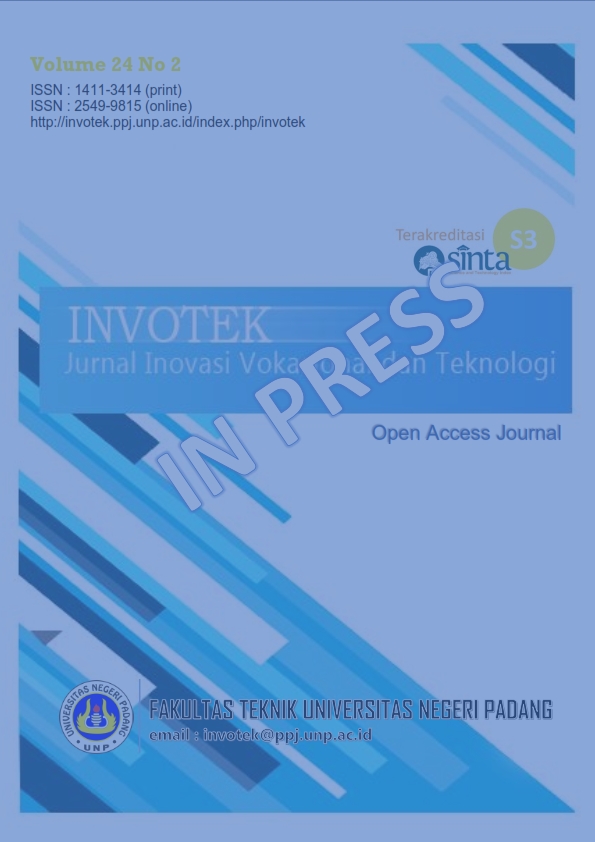Main Article Content
Abstract
The liquefaction unit is a process unit for processing the desired product from the gas phase to the liquid phase. The purpose of this unit is to facilitate the transportation process with the help of refrigerants. The disadvantage of this unit is that the heat transfer is less than optimal. In addition, this study can also maximize the storage system because it can reduce the specific volume of gas up to 1/600 times to increase energy efficiency in the LNG Plant. The potential for various options to increase the efficiency of the liquefaction cycle is tried to be calculated in this study. The calculation method between the mass balance and energy balance obtained the results of the design calculation that the type 2-4 heat exchanger, Carbon steel material, area 1023, 35m2, Rd 0.001-hour ft2 °F / Btu can be concluded that the design of the heat exchanger is safe and recommended.
Keywords
Article Details

This work is licensed under a Creative Commons Attribution 4.0 International License.
Copyright (c): Eky Novianarenti, Heroe Poernomo, Erlinda Ningsih, Imaniah Sriwijayasih, Arrad Ghani Safitra (2024)References
- V. L. Bondarenko, O. V Diachenko, and T. V Diachenko, “Analysis of Industrial LNG Production Technologies,” Chem. Pet. Eng., vol. 57, no. 11, pp. 985–996, 2022, doi: https://doi.org/10.1007/s10556-022-01036-w.
- V. L. Bondarenko and T. V D’yachenko, “Utilization of LNG exergy. Main directions,” Chem. Pet. Eng., vol. 56, no. 3, pp. 247–254, 2020, doi: https://doi.org/10.1007/s10556-020-00766-z.
- C. Jin and Y. Lim, “Optimization and economic evaluation of integrated natural gas liquids (NGL) and liquefied natural gas (LNG) processing for lean feed gas,” Appl. Therm. Eng., vol. 149, pp. 1265–1273, 2019, doi: https://doi.org/10.1016/j.applthermaleng.2018.12.143.
- M. Wang, R. Khalilpour, and A. Abbas, “Thermodynamic and economic optimization of LNG mixed refrigerant processes,” Energy Convers. Manag., vol. 88, pp. 947–961, 2014, doi: https://doi.org/10.1016/j.enconman.2014.09.007.
- A. Vatani, M. Mehrpooya, and A. Palizdar, “Energy and exergy analyses of five conventional liquefied natural gas processes,” Int. J. Energy Res., vol. 38, no. 14, pp. 1843–1863, 2014, doi: https://doi.org/10.1002/er.3193.
- D. Elliot et al., “Benefit of integrating NGL extraction and LNG liquefaction technology,” in AIChE Spring National Meeting, 5th Topical Conference on Natural Gas Utilization (TI) Session 16c-Gas, Atlanta, USA, 2005, 2005, pp. 10–14.
- B. Ghorbani, M.-H. Hamedi, and M. Amidpour, “Development and optimization of an integrated process configuration for natural gas liquefaction (LNG) and natural gas liquids (NGL) recovery with a nitrogen rejection unit (NRU),” J. Nat. Gas Sci. Eng., vol. 34, pp. 590–603, 2016, doi: https://doi.org/10.1016/j.jngse.2016.07.037.
- M. Mehrpooya, M. Hossieni, and A. Vatani, “Novel LNG-based integrated process configuration alternatives for coproduction of LNG and NGL,” Ind. Eng. Chem. Res., vol. 53, no. 45, pp. 17705–17721, 2014, doi: https://doi.org/10.1021/ie502370p.
- A. Vatani, M. Mehrpooya, and B. Tirandazi, “A novel process configuration for co-production of NGL and LNG with low energy requirement,” Chem. Eng. Process. Process Intensif., vol. 63, pp. 16–24, 2013, doi: https://doi.org/10.1016/j.cep.2012.10.010.
- M. S. Khan, Y. D. Chaniago, M. Getu, and M. Lee, “Energy saving opportunities in integrated NGL/LNG schemes exploiting: Thermal-coupling common-utilities and process knowledge,” Chem. Eng. Process. Process Intensif., vol. 82, pp. 54–64, 2014, doi: https://doi.org/10.1016/j.cep.2014.06.001.
- M. Wang and Q. Xu, “Optimal design and operation for simultaneous shale gas NGL recovery and LNG re-gasification under uncertainties,” Chem. Eng. Sci., vol. 112, pp. 130–142, 2014, doi: https://doi.org/10.1016/j.ces.2014.03.021.
- H. M. Hudson, J. D. Wilkinson, K. T. Cuellar, and M. C. Pierce, Integrated liquids recovery technology improves LNG production efficiency. American Institute of Chemical Engineers, 2004.
- E. Novianarenti, E. Ningsih, and N. A. Rahman, “Calculation Study of Double Pipe Type Heat Exchanger in LNG Plant Pre-Design with Capacity 250 tons/hour,” J. Mech. Eng. Sci. Innov., vol. 4, no. 1, pp. 27–34, 2024, doi: https://doi.org/10.31284/j.jmesi.2024.v4i1.5164.
- R. Shanahan and A. Chalim, “Literature Study On The Effectiveness Of Shell And Tube Heat Exchangers 1-1 Glycerine Fluid Systems–,” vol, vol. 6, pp. 164–170.
- A. S. B. Wardhani, A. T. Labumay, and E. Ningsih, “Influence of Fluid Inflow Rate on Performance Effectiveness of Shell and Tube Type Heat Exchanger,” J. Mech. Eng. Sci. Innov., vol. 2, no. 1, pp. 9–15, 2022, doi: https://doi.org/10.31284/j.jmesi.2022.v2i1.2993.
- J. L. Gordon, “Hydraulic turbine efficiency,” Can. J. Civ. Eng., vol. 28, no. 2, pp. 238–253, Apr. 2001, doi: 10.1139/l00-102.
- M. Kanoğlu, “Cryogenic turbine efficiencies,” Exergy, An Int. J., vol. 1, no. 3, pp. 202–208, 2001, doi: https://doi.org/10.1016/S1164-0235(01)00026-7.
- V. Semaskaite, M. Bogdevicius, T. Paulauskiene, J. Uebe, and L. Filina-Dawidowicz, “Improvement of Regasification Process Efficiency for Floating Storage Regasification Unit,” Journal of Marine Science and Engineering, vol. 10, no. 7. 2022. doi: 10.3390/jmse10070897.
- M. S. Khan, S. Effendy, I. A. Karimi, and A. Wazwaz, “Improving design and operation at LNG regasification terminals through a corrected storage tank model,” Appl. Therm. Eng., vol. 149, pp. 344–353, 2019, doi: https://doi.org/10.1016/j.applthermaleng.2018.12.060.
